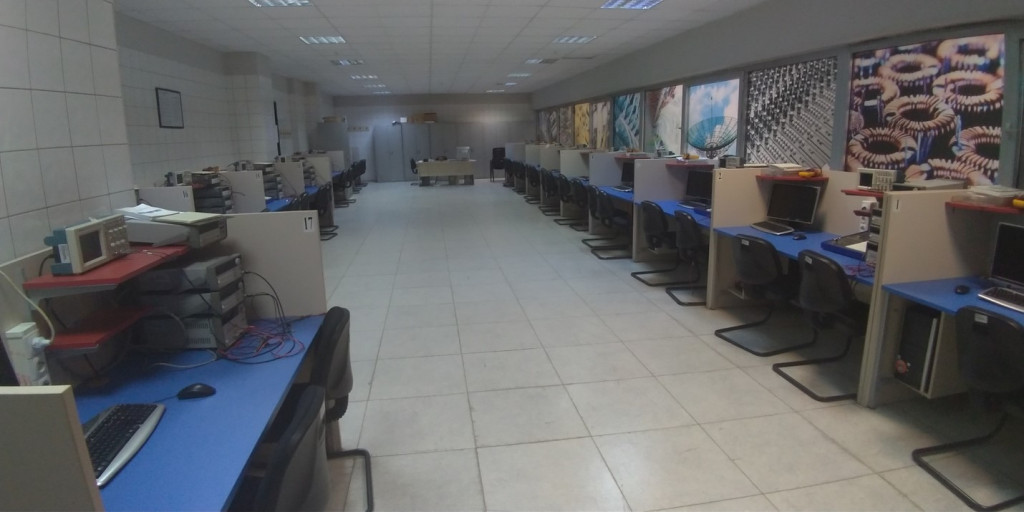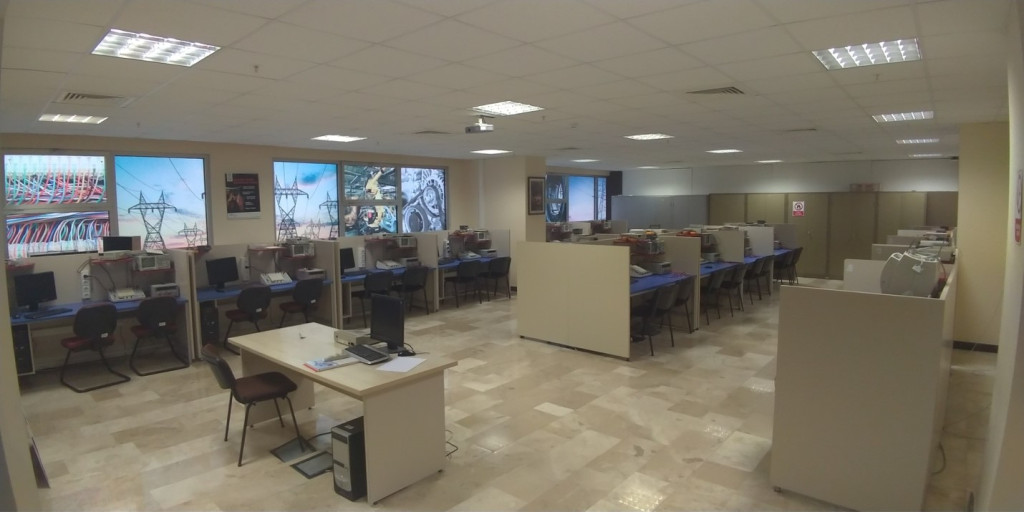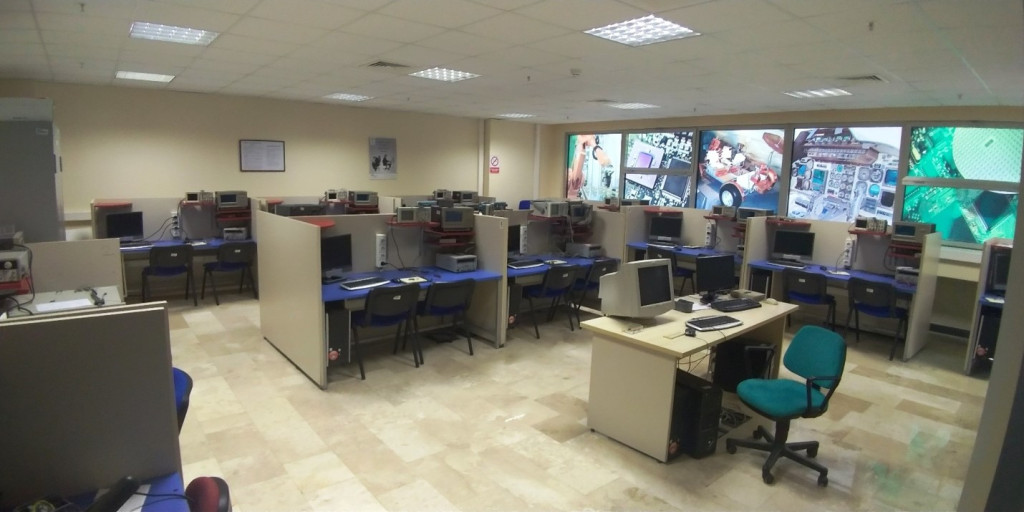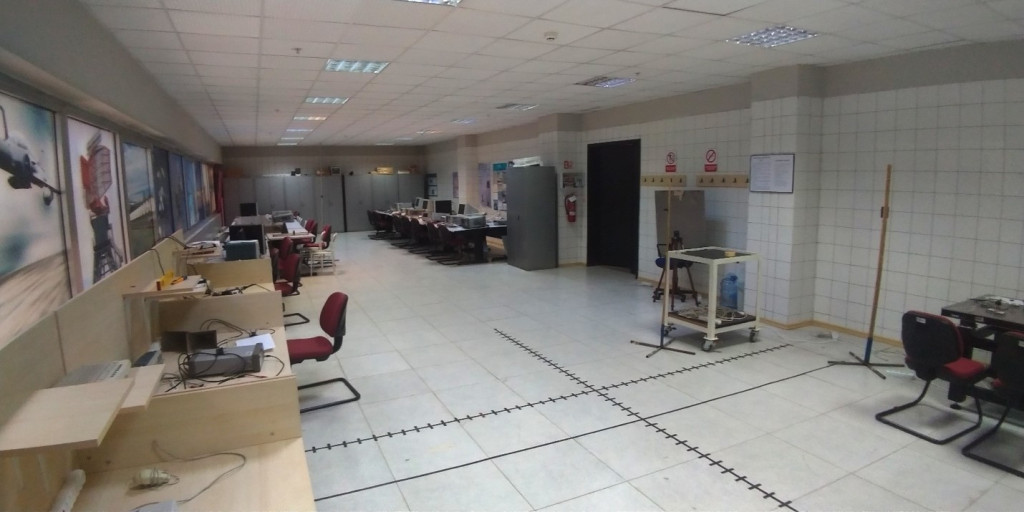Laboratories
Electronics and Communication Laboratory
Accommodating 35 students on 100m2 area, the Laboratory is equipped with 17 workstations with a PC for two students, color display digital oscilloscope, function generator, programmable power supply and multimeter.
Students are offered state of the art measurement and test facilities to perform their course experiments, projects and research work. One major aim of the Laboratory is to introduce automated test systems to the students. The programmable measurement equipment in the Laboratory, together with the PC and sophisticated software packages, constitute an automated test and measurement system which are connected to computers through GPIB interfaces.
Students can use graphical programming environments such as VEE or Test Point to control the measurement devices from PC and to transfer test results to PC automatically. Results of measurements and analyses are obtained quickly and easily to be able to concentrate on the meaning of the test results rather than the details and greatly enhance learning. In addition, the students acquire the required skills to design and build an automated test system.
The Laboratory also provides practical skills in the diversified fields of Electronic Communication Engineering, starting from the principles of modulation up to the recent concepts of Bluetooth technology. The primary aim is to let students experimentally explore the applications of their knowledge using excellent facilities. All basic experiments can be performed related to analog and digital modulations, transmitters and receivers. 3GHz spectrum analyzers are also available in the laboratory.
With this laboratory, the students are able to perform their course experiments, projects and research work connected to Communication Engineering in an effective manner.

Electronic and Digital Design Laboratory
Accommodating 35 students on 100m2 area, the Laboratory is equipped with 19 student workstations. Each workstation features state-of-the-art test and measurement equipment, such as power supplies, signal generators, digital multimeters, and mixed-signal oscilloscopes. One network printer, several analog and digital IC testers and EPROM programmers are also available in the laboratory.
The Laboratory also provides practical experience about the concepts used in the design of digital systems. Students learn how to analyze, simulate and practically implement digital circuits. Using mixed-signal oscilloscopes with 2 analog and 16 logic channels, they can make detailed signal analysis and multi-channel timing measurements on analog, digital and mixed circuits.

Embedded Systems Laboratory
Accommodating 35 students on 80m2 area, the Laboratory is equipped with 12 sets of Intel 8085 and Intel 8086 microcontrollers trainers kits and their peripherals, personal computers and measurement instruments.
The purpose of this laboratory is to train the students to be familiar with the software and hardware of microcontrollers so that they can gain enough experiences to meet the demand of the embedded systems era. In each set, a parallel I/O board, a pressure/strain gauge card, a temperature sensor card and a stepper motor are present in order to teach students how to integrate various hardware with microcontrollers. All PCs are equipped with various software development tools such as assemblers, compilers and simulators and have high speed Internet connection. Each set comprises state-of-the-art measuring equipment such as oscilloscope, logic analyzer, signal generator, digital multimeter and power supply.
In addition, Z80-based training cards, digital IC testers, EPROM programmers, EPROM erasers and a network printer are available in the laboratory.
These facilities enable students to build a firm background in microcontroller hardware as well as software, and design and realize basic microcontrollers based systems.
Students also carry out experiments and create simulations on digital signals and systems using Code Composer Studio, MATLAB, C++.

RF and Antenna Laboratory
Accommodating 40 students on 100m2 area, the Laboratory is equipped with 25 student workstations. Each workstation features the state-of-the art devices including EMC test systems, signal sources, spectrum and network analyzers with frequencies ranging from a few MHz to 40 GHz.
The aim of the Laboratory is to introduce undergraduate/graduate students to basic radio, microwave and antenna equipment, and measurement techniques.
Almost all RF and Microwave/Antenna related experiments including some graduate level subjects can be performed in the laboratory. Some of them are frequency/wavelength measurements, power measurements and line attenuation, VSWR measurements and transmission line impedance, transmission line impedances, use of smith chart, characteristics of microwave components, return loss, reflection coefficient, antenna gain measurements, path loss and noise measurements, EMC tests and measurements and radio channel measurements.


